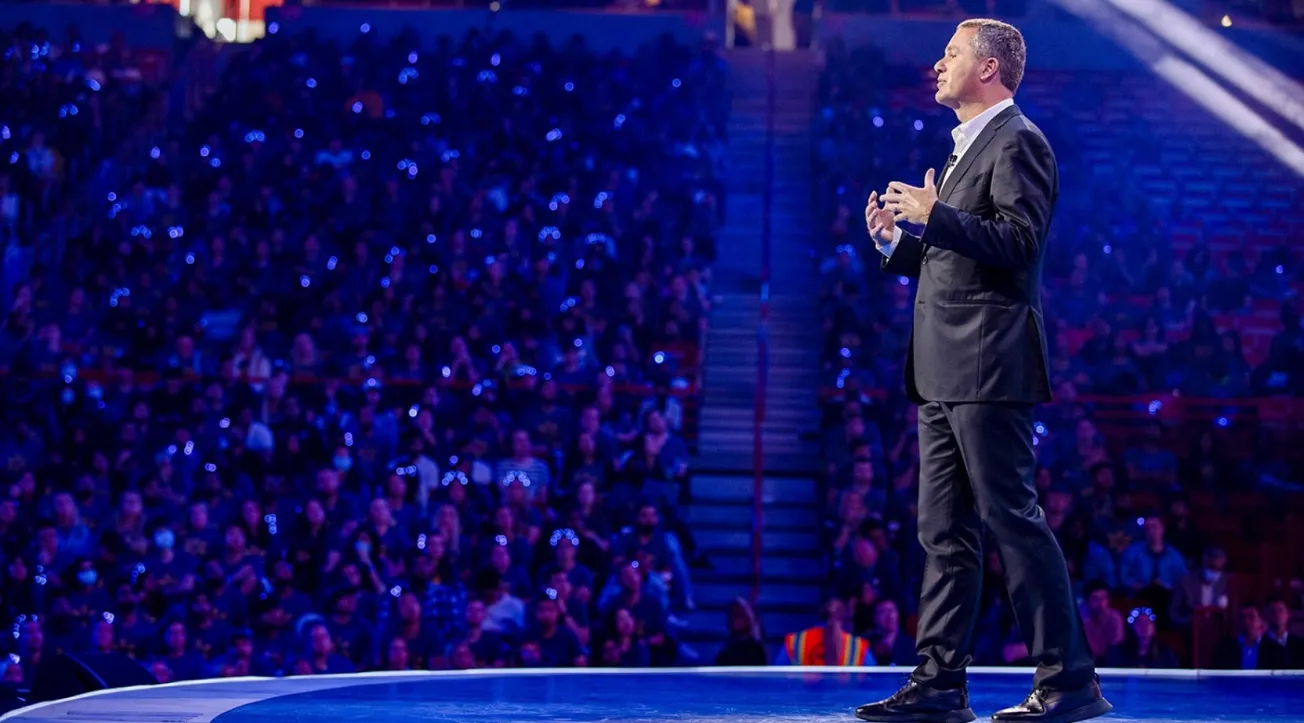MINNEAPOLIS — Target Corp. achieved stunning profit growth in fiscal 2023 despite continued soft sales that ameliorated somewhat over the second half. Looking to the future, management expects to reignite growth by reinforcing, refining and enhancing the strengths that have driven top- and bottom-line expansion for the retailer over the past decade.
No strategic reset is planned. Rather, as president and chief executive officer Brian Cornell told analysts during the company’s financial community meeting earlier this month, it will be a matter of putting the assets and capabilities built during the last decade — a period that saw Target grow its top line by almost 50% — to work in ways that will be in step with how consumers will be shopping in the next decade.
“Our goal is to recapture profitable sales, traffic and market share gains by expanding what makes Target different and better for our guests, amplifying our appeal to consumers beyond our existing guest base, and reinforcing the innovation and investment that drive durable and consistent results for our business and shareholders,” he said.
Underlying the strategic investments that Target’s leadership has planned, Cornell said, are an understanding of how consumers are shopping today and how they will shop differently in the future. And, as Cara Sylvester, executive vice president and chief guest experience officer, pointed out, shopping today is truly nonlinear.
“A large portion of U.S. consumers, about 40%, start their purchase online, and 20% start on social platforms,” she said. “And those are just the people who are actively looking to shop. Many more are enticed to shop by the inspiration they find scrolling their social feeds for hours every day. This is expansive retail, nontraditional entry points, seamless transition between stores, online and social and fully in tune with what shoppers want and need. To meet these shoppers where they are, we spend a lot of time getting to know what matters to them.”
Consequently, Target’s physical stores will continue to play a central role in its strategy to resume growth. Cornell noted that the company has opened about 200 stores during the past decade, and plans to open more than 300 new locations over the next 10 years. By the end of the next decade, those new stores are expected to generate incremental sales of about $15 billion annually.
Interestingly, though, while store development in the past few years emphasized smaller formats that enabled the retailer to penetrate urban environments such as Manhattan, going forward the focus will return to full-size stores, which management believes will allow it to bring “the best of Target” into new trading areas.
Importantly, a key feature of these stores will be a broader food and beverage offering that capitalizes on the progress made in the last couple of years, which saw category sales grow by $8 billion. While executives emphasized that the smaller stores deployed in recent years have generated good returns and provided valuable lessons about segmentation and tailoring assortments, the larger stores are expected to produce the strongest returns. That shift in emphasis in fact began last year: Target added 15 stores measuring 50,000 to 169,999 square feet, while closing six of its smaller stores measuring less than 50,000 square feet.
One of the most prominent differentiators for Target over the past several decades has been its brand strategy, and its brands portfolio will continue to be a major focus going forward. Christina Hennington, executive vice president and chief growth officer, suggested that Target’s brand strategy is like a three-legged stool, supported by an unmatched range of owned brands, national brands and partnerships with such huge brands as Apple, Disney and Ulta Beauty, which provide deeper expertise and brand recognition.
“We’ve had tremendous success attracting and cultivating these unique collaborations and, in the years ahead we expect they’ll play an even bigger role, given the incrementality they’ve delivered,” she said.
Target’s owned brands will also continue to be a priority. The retailer now has 11 brands that generate at least $1 billion in annual sales, and its owned brands combined contribute more than $30 billion, or nearly one-third of total sales.
As Cornell pointed out, Target’s investments in supply chain and technology enabled the retailer to seize the demand opportunity created by the COVID-19 pandemic. Those areas will continue to receive investment as Target prepares to meet the evolving needs and behaviors of consumers.
According to chief operating officer and chief financial officer Michael Fiddelke, the transformation of Target’s supply chain will continue. “This includes our journey to automate upstream replenishment with a focus on reducing store workload and increasing reliability,” he told analysts. “It also includes the build-out of our sortation center network, which offers faster delivery times while meaningfully reducing the cost of last-mile delivery.”
Last year Target’s investments in digital technology transformed guests’ digital experience from a utilitarian, one-size-fits-all shopping platform to one that greets users personally and delivers a custom blend of newness, trend, value and ease, Sylvester remarked. For example, the company is using generative artificial intelligence (AI) to create friendlier and more relevant explanations on its product detail pages.
AI is also the engine behind the enhancements being made to Target Circle, the retailer’s loyalty program, which presently boasts 100 million members. Those members are worth the investment: According to Sylvester, Target Circle members last year visited the retailer five times more often and spent five times more than non-member guests.
The strategy and investments detailed by Target leadership are expected to generate average sales growth of about 4% over the next 10 years, which would add more than $50 billion on top of the $105 billion reported for 2023. Executives believe that operating profit margin, a vital metric, can at least reach the prepandemic rate of 6%, and an exceptional operating performance last year suggests that is a feasible goal.
Both operating profit and net income skyrocketed more than 48% to $5.71 billion and $4.14 billion, respectively, in 2023. Earnings per share did even better, escalating 49% to $8.94 from $5.98.
The top line, however, dipped 1.7% to $105.8 billion, as comparable sales fell 3.7%. However, Fiddelke pointed out that customer traffic trends varied widely from quarter to quarter but improved in both the third and fourth quarters. “As traffic improved we saw a better comp sales trend, better digital sales and a dramatic improvement in discretionary categories,” he elaborated.
Looking ahead to 2024, Fiddelke said the company is still planning cautiously in view of consumer spending patterns over the past two years. “On the discretionary side of our business, even as we’ve seen improving trends over the last two quarters, overall demand remains soft as spending patterns continue to normalize from pandemic peaks,” he said. “In our frequency businesses, we’re anticipating a further recovery in unit trends as inflation continues to moderate. Altogether we’re planning for a modest increase in comparable sales in the 0% to 2% range for the year.”







